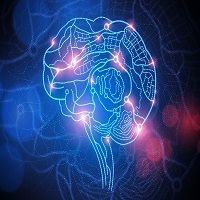Article
Observed Differences in Female and Male Mice's Pain
Author(s):
Female mice models felt pain differently than their male counterparts, according to a study published in Nature Neuroscience.

Male and female mice process pain using different cells, according to findings published in Nature Neuroscience.
Researchers from McGill University in Toronto, Canada used multiple approaches to show that microglia stem cells are not required for mechanical pain hypersensitivity in animal models. The researchers aimed to prove the hypothesis — and longstanding accepted theory – that pain travels from the site of injury or inflammation through the nervous system through the microglia. In order to do this, they interfered with the microglia functionality in various ways.
“Research has demonstrated that men and women have different sensitivity to pain and that more women suffer from chronic pain than men, but the assumption has always been that the wiring of how pain is processed is the same in both sexes,” explained co-senior author Jeffrey Mogil, PhD, EP Taylor Professor of Pain Studies at McGill University and Director of the Alan Edwards Centre for Research on Pain, in a press release. “The realization that the biological basis for pain between men and women could be so fundamentally different raises important research and ethical questions if we want to reduce suffering.”
However, the researchers found that the microglia transmission though the nervous system is only true for male mice. By tampering with the microglia function, the researchers were only able to demonstrate this transmission in male mice — female mice were unaffected.
The investigators theorize that T cells, different immune cells in the body, are behind the pain transmission in females. But why this happens is still unknown.
“Understanding the pathways of pain and sex differences is absolutely essential as we design the next generation of more sophisticated, targeted pain medications,” Michael Salter, MD, PhD, Head and Senior Scientist, Neuroscience & Mental Health at SickKids and Professor at The University of Toronto, the other co senior author, continued in the statement. “We believe that mice have very similar nervous systems to humans, especially for a basic evolutionary function like pain, so these findings tell us there are important questions raised for human pain drug development.”
The team believes that these findings indicate far reaching possibilities for the future of understanding pain, particularly how researchers are able to develop medications to target pain. Biomedical research using animal models like mice is also likely to be impacted, the authors added.
They hope their finding contributes to the addition of female mice in preclinical research. For example, a study recently reported by MD Magazine demonstrated a potential reason why female mice are more susceptible to multiple sclerosis.
“For the past 15 years scientists have thought that microglia controlled the volume knob on pain, but this conclusion was based on research using almost exclusively male mice,” concluded Mogil. “This finding is a perfect example of why this policy, and very carefully designed research, is essential if the benefits of basic science are to serve everyone.”





